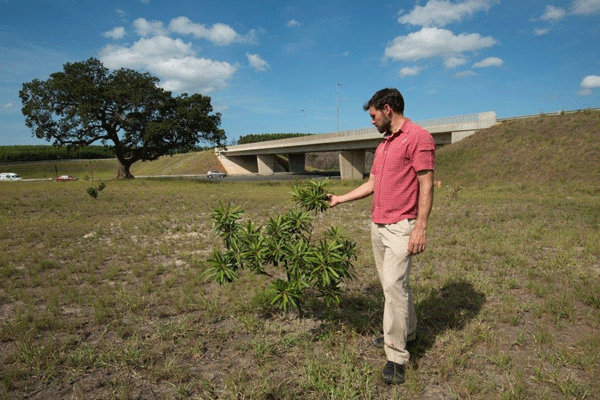
Proactive steps taken by SANRAL’s environmental experts are preserving rare plant species and sensitive habitats during road-building programmes throughout South Africa.
Mpati Makoa, the Environmental Manager of the South African National Roads Agency (SOC) Limited (SANRAL), said the coming Arbour Month activities will focus on the need to protect indigenous trees and forests, while presenting an opportunity to focus attention on SANRAL’s excellent track record in conservation.
SANRAL’s conservation activities at the Mtentu Bridge construction site, along the N2 Wild Coast road project, demonstrate its commitment to work with experts, other government departments and local communities to protect rare plants and rehabilitate the environment after construction activities are completed.
The Minister of Transport, Joe Maswanganyi, announced in early September that work on South Africa’s longest main span bridge will start as part of road development designed to unlock the economic potential of the Eastern Cape and provide residents with easier access to health care, education and employment opportunities.
Rescue and preservation
In preparation for the construction, environmentalists are “rescuing” thousands of plants from roads reserves of the Mtentu Bridge and from the Msikaba Bridge site, and relocating them to specially-constructed temporary holding areas within the construction areas.
At these holding areas the plants will be maintained, nurtured and replanted when construction finishes. Rarer species will be moved to protected areas and seeds from selected plants are harvested and stored to be planted over the next few growing seasons.
Makoa said the tree and plant conservation activities in the Eastern Cape are not new to SANRAL, as over the years, similar efforts have been undertaken on several other construction and maintenance sites across the 22 200km primary road network.
SANRAL recognises that road building often has an impact on the environment and there are stringent policies and procedures in place to mitigate this.
Limpopo
Between Makhado and the Beit Bridge border in Limpopo, the N1 passes through one of the world’s largest baobab reserves. This remarkable tree that grows predominantly in the bushveld climate is singled out for special mention during this year’s Arbour Month activities.
During the design of the road, great care was taken to ensure only a minimum number of trees were affected. A few of the giant trees were, however, successfully relocated close to the edges of the road reserve.
The relocations took place under the supervision of authorities, with the cooperation of land owners and local communities. The health of the trees is constantly monitored and inspections show that all the baobabs are in good condition.
KwaZulu-Natal
In KwaZulu-Natal, SANRAL took extraordinary steps to protect the plants that were disturbed during the construction of the Kwambonambi interchange in the northern part of the province. The N2 passes through a swamp forest which contained rare types of vegetation.

Makoa said: “SANRAL saw the opportunity to revive the swamp forest on the downstream side of the new interchange. A botanist identified 91 plant species – of which 20 are considered to be rare – to be relocated. Over 90% of the replanted species have survived and are growing well despite the drought.”
North West
In the North West, SANRAL took proactive measures to plant indigenous trees at traffic circles on the R24. More than 30 different species that thrive in the water-scarce climate were selected, including the mountain aloe, the white stinkwood and the forest bushwillow.
Western Cape
In the Western Cape, SANRAL’s upgrades to the N7 meant that special precautions were taken to mitigate environmental damage.
During the first quarter of 2016, the agency carefully removed nearly 60 varieties of plant species, which were temporarily housed in nurseries while construction was underway.
As construction is now complete, plants of which the majority are fynbos and bulb species, are systematically re-introduced to their natural environment. In the past two months, over 20 000 plants have been re-planted and are thriving.
With the Cape’s low rainfall and prevailing drought conditions, many of the plants may be kept in nurseries until there has been more rain and will therefore likely be re-planted in time for next winter.
“Through our conservation activities we are contributing to the aims of Arbour Month and making a significant contribution to ensure South Africa’s natural heritage can co-exist with the need for modern road infrastructure,” said Makoa.

